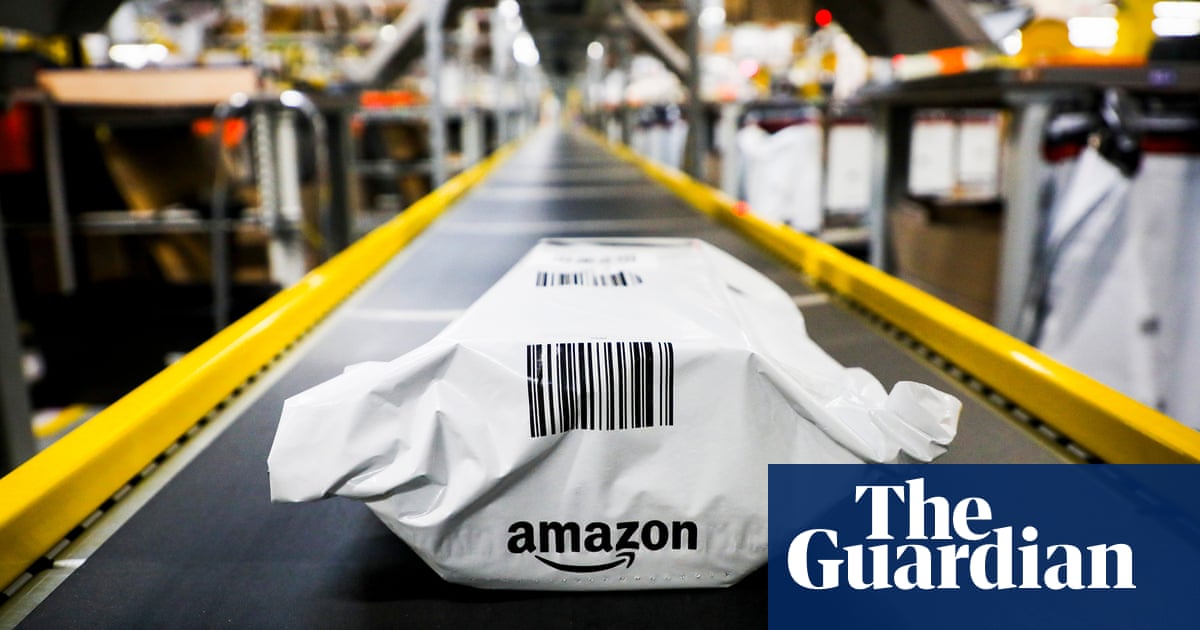The amount of plastic packaging waste created by Amazon has increased in the US even as the online retail giant sought to phase out plastics elsewhere in the world, a report claims, amid growing pressure for a global treaty to end plastic pollution.
Amazon created 208m pounds (94m kg) of plastic packaging in the US in 2022, equal to the weight of nearly 14,000 large African elephants, which is a 9.8% increase on the amount of packaging it produced in 2021, according to Oceana, an American marine conservation group that used industry data and Amazon’s market announcements to form its analysis.
The increase in 2022 occurred even as Amazon made headway in reducing its plastic use elsewhere in the world, cutting its plastic packaging globally by 11.6% compared to a year previously. In Europe, the company has replaced its plastic delivery sleeves with paper and cardboard, amid new rules from the European Union aimed at stamping out single-use plastics.
Oceana said that the persistent reliance on plastics in the US is “troubling”, pointing to evidence that much of this waste will end up ingested by marine animals or strewn along coastal areas. According to the group, up to 22m pounds (9.9m kg) of Amazon’s global plastic packaging from 2022 will have ended up in the world’s waterways and seas. Oceana’s analysis cites a 2020 scientific study published in Science that found 11% of plastic waste globally ended up in aquatic ecosystems in 2016.
“This sort of plastic film is a big problem for the oceans and a lot of it can’t be recycled,” said Matt Littlejohn, senior vice-president of strategic initiatives at Oceana.
“Amazon is one of the most innovative companies on the planet. It has eliminated plastic packaging in Europe and they can clearly do so across the US, too, even without regulatory pressure. This is a completely solvable problem. They have just got to get on with solving it. They know what to do.”
Amazon has disputed Oceana’s analysis, calling it “misleading” and highlighting its global reduction in plastic use, although the company did not disclose US-specific figures on plastic packaging that counter the report’s findings.
The company has pointed to its efforts to reduce per-shipment packaging weight which, since 2015, have avoided more than 2m tons of packaging, as well as the unveiling last year of its first automated US fulfillment centre, located in Ohio, that replaces plastic packaging and air pillow fillers with paper alternatives.
“Amazon is committed to reducing or eliminating packaging altogether, including the use of single-use plastic, and we’ve shown this by sharing consistent and transparent updates on our progress,” said Pat Lindner, vice-president of mechatronics and sustainable packaging at Amazon.
“We’ve also started a multiyear effort to eliminate plastic delivery packaging from our US automated fulfillment centers, with the first already in operation and delivering to customers without any plastic packaging. We’ll continue to invest, invent and scale our packaging reduction work for the good of customers and the planet.”
The report comes amid mounting evidence showing the prevalence of plastics in the environment, from litter in cities, beaches and oceans to invasions of more fundamental elements of life, with long-lasting plastics breaking down into microscopic pieces that are found in our bloodstreams, placentas and even the air we breathe.
“We are swimming in and breathing in this plastic, and this stuff lasts for an eternity,” said Littlejohn. “I don’t think the general public has caught onto how scary this all is.”
Two years ago in Kenya, governments agreed at a United Nations summit to forge a legally binding international treaty by the end of 2024 to stem plastic pollution, which Espen Barth Eide, president of the UN gathering, warned “has grown into an epidemic”.
The next round of negotiations over this treaty will be held later this month in Canada and activists have called for a strong agreement that curbs single-use plastics and meaningfully reforms an opaque and often illusory recycling system.
One group, Agenda Antárctica, has even undertaken a redesign of Antarctica’s unofficial flag to one that shows the vast frozen continent riddled with microplastics, following studies that have shown that plastic has been found in the remote polar region’s snow.
“To see somewhere so pristine and untouched by mankind and discover it has been polluted by plastics so small you can’t see them was just awful to me,” said Graham Bartram, a vexillologist who designed an unofficial flag that has been used informally to depict the continent since the 1990s – no single country owns the frozen continent – and who has now redesigned the flag to depict the plastic pollution.
“I don’t think plastics are inherently evil, they can be very useful, but we can use them sensibly,” said Bartram. “I hope the flag makes people think a little about what we are doing to the planet. Let’s face it: we only have one planet, it’s not like we have a back-up plan of moving to another one next door.”







